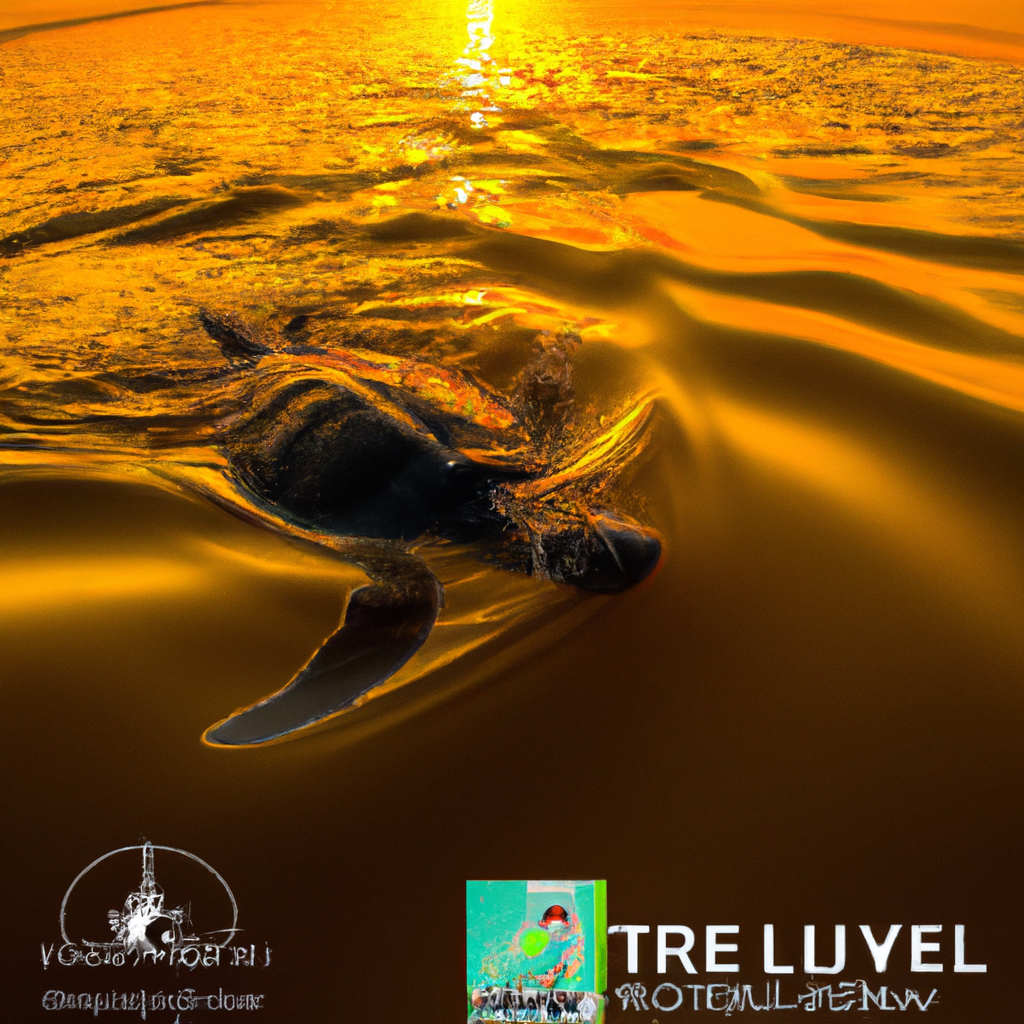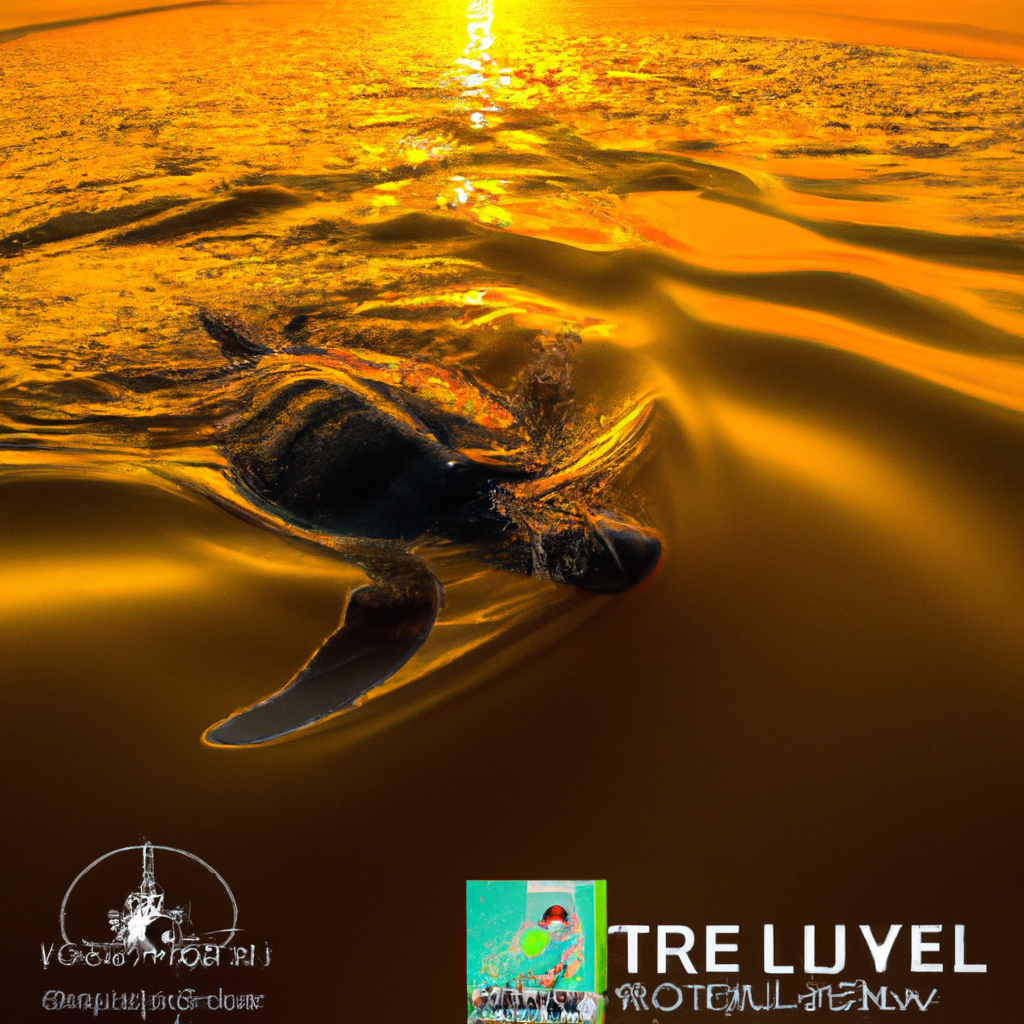Suriname is home to one of the most remarkable creatures in the ocean – the Leatherback Turtle. However, this incredible species is facing a grave threat to its survival. With its strong tourism industry, Suriname must strike a delicate balance between promoting tourism and preserving the habitat of these endangered turtles. In this article, we will explore the importance of protecting the Leatherback Turtle in Suriname, not only for their own survival but also for the sustainability of Suriname’s thriving tourism sector.
Threats to the Leatherback Turtle
Poaching
One of the major threats to the leatherback turtle population in Suriname is poaching. These turtles are often illegally hunted for their meat, eggs, and shells. The demand for leatherback turtle products, especially their meat and eggs, pose a serious threat to their survival. The indiscriminate hunting of leatherback turtles not only reduces their population but also disrupts their reproductive cycle. Efforts need to be made to increase awareness about the negative impacts of poaching and to enforce strict laws to prevent this illegal activity.
Habitat Loss
Habitat loss is another significant threat to the leatherback turtle population in Suriname. As coastal areas are increasingly developed for human activities, the nesting beaches of leatherback turtles are being destroyed or degraded. Construction activities, pollution, and erosion are taking a toll on these crucial nesting sites. The loss of suitable nesting beaches affects the reproductive success of leatherback turtles and hampers their overall population growth. It is essential to implement measures to protect and restore the nesting habitats of these turtles.
Climate Change
Climate change poses a significant threat to the leatherback turtle population in Suriname. Rising temperatures and changing weather patterns have a direct impact on sea turtle populations. One of the key ways climate change affects leatherback turtles is through the temperature-dependent sex determination. As the temperature increases, it skews the sex ratio of the hatchlings, leading to an imbalance in the population. Additionally, climate change also influences ocean currents and affects the availability of food sources for leatherback turtles. Adapting to these changing conditions is crucial for their survival.
Conservation Efforts
Protected Areas
To protect the leatherback turtles in Suriname, the establishment of protected areas is essential. These areas provide safe havens for the turtles to nest and forage without disturbance. In Suriname, the Galibi Nature Reserve serves as an important protected area for leatherback turtles. Measures such as strict regulations, patrolling, and enforcement of fishing restrictions are implemented within these protected areas to ensure the safety of the turtles and their habitats.
Community Engagement
Engaging local communities in conservation efforts is crucial for the protection of leatherback turtles. In Suriname, initiatives have been taken to involve local communities living near nesting sites. Community-based conservation programs raise awareness about leatherback turtles, their importance, and the threats they face. These programs also provide alternative livelihood opportunities to reduce dependence on leatherback turtle products. By involving local communities in conservation activities, we can foster a sense of ownership and responsibility towards the protection of these endangered turtles.
Research and Monitoring
Research and monitoring play a vital role in understanding the behavior, ecology, and population dynamics of leatherback turtles. Through research initiatives, scientists can gather valuable data on nesting patterns, migration routes, and the overall health of the population. Monitoring programs help track the success of conservation efforts, identify threats, and inform management decisions. By continuously monitoring the leatherback turtle population, we can ensure that conservation strategies are effective and adapt them as needed.
The Importance of Leatherback Turtles in Suriname
Ecological Significance
Leatherback turtles are of great ecological significance in Suriname. As marine reptiles, they help maintain the balance of marine ecosystems. Leatherback turtles feed on jellyfish, which helps control their population and prevent jellyfish blooms. These turtles also contribute to nutrient cycling by depositing their eggs, which nourish the dunes and surrounding vegetation. Their presence in Suriname’s coastal waters is an indicator of a healthy marine ecosystem, and their conservation is crucial for maintaining biodiversity and ecological balance.
Economic Value
Leatherback turtles also hold economic value in Suriname. The presence of these magnificent creatures attracts tourists from around the world, contributing to the tourism industry. Visitors come to witness the nesting and hatching events, generating revenue for local communities and supporting livelihoods. By protecting leatherback turtles and their habitats, Suriname can tap into the economic potential of ecotourism, creating sustainable income streams and promoting conservation as a valuable economic activity.

Cultural Importance
Leatherback turtles have immense cultural importance in Suriname. They hold significance in the traditions, beliefs, and folklore of the local communities. These turtles are considered sacred by some indigenous groups, and their nesting events are celebrated with ceremonies and rituals. Leatherback turtles are deeply intertwined with the cultural identity of Suriname, and their conservation serves to preserve the heritage and traditions associated with these magnificent creatures.
Leatherback Turtle Life Cycle
Nesting
The life cycle of a leatherback turtle begins with nesting. Adult female leatherbacks return to the same beaches they were born on to lay their eggs. They typically nest during the night, using their hind flippers to dig a deep hole in the sand. After laying around 80 to 100 eggs, they carefully cover the nest to protect it from predators. The female then returns to the ocean, leaving the eggs to develop and hatch on their own.
Hatching
After an incubation period of around 60 to 70 days, the leatherback turtle hatchlings emerge from their nests. They use a special egg tooth to break through the shell and make their way to the surface. Once on the beach, the hatchlings instinctively make their way towards the ocean, guided by the natural light reflecting off the water. This journey is perilous, with predators lurking and obstacles to overcome. Those that successfully reach the sea begin their journey towards adulthood.
Migration
Leatherback turtles undertake long migrations, covering thousands of miles, between their nesting beaches and foraging grounds. After nesting, adult females make their way back to the foraging areas, where they feed on a diet primarily consisting of jellyfish. Male leatherback turtles also migrate, but their movements are less understood. The exact routes taken by leatherback turtles during migration are still being studied, but advances in technology have allowed researchers to track their movements and learn more about their migration patterns.
Characteristics of the Leatherback Turtle
Physical Appearance
The leatherback turtle is the largest species of turtle in the world. They have a unique physical appearance, characterized by their flexible, leathery carapace. Unlike other species of turtles, which have a hard, bony shell, the carapace of the leatherback turtle is covered in a layer of rubbery skin. This adaptation allows them to dive to great depths and withstand the pressures of the ocean. They also have long front flippers, adapted for powerful swimming, and a distinctive ridged back that gives them their name.
Behavior
Leatherback turtles exhibit fascinating behavior throughout their life cycle. These turtles are known for their excellent navigational skills, returning to the same nesting beaches year after year. During nesting, the females display a careful and deliberate nesting process, ensuring the safety of their eggs. Hatchlings display a remarkable instinct to find their way to the ocean and begin their journey. Leatherbacks are also known for their deep-diving abilities, often reaching depths of over 4,000 feet in search of food.
Diet
The diet of the leatherback turtle consists primarily of jellyfish. They have specialized adaptations in their digestive system to handle the toxic components of jellyfish. Their throat is lined with backward-pointing spines that help them grip and swallow their slimy prey. The consumption of jellyfish by leatherback turtles is of critical ecological importance, as it helps control jellyfish populations and maintains the balance of marine ecosystems.
Natural Predators of the Leatherback Turtle
Sharks
Sharks pose a significant threat to leatherback turtles, particularly during their migration and foraging periods. Requiem sharks and tiger sharks are known to feed on leatherback turtles, especially young individuals. The increased presence of sharks in certain areas can disrupt the feeding patterns and movements of the turtles, potentially affecting their overall health and survival. Understanding the interaction between leatherback turtles and their shark predators is crucial for their conservation.

Crocodiles
In some coastal areas where leatherback turtles nest, crocodiles are among the natural predators of their eggs and hatchlings. Crocodiles often lie in wait near nesting beaches, preying on the vulnerable hatchlings as they make their way to the ocean. The presence of crocodiles adds another layer of challenges for leatherback turtles during the critical hatching phase. Efforts to protect nesting beaches must also consider the presence and conservation of crocodile populations.
Seabirds
Seabirds, such as gulls and frigatebirds, are known to prey upon leatherback turtle hatchlings. These birds, with their efficient aerial abilities, can swoop down and snatch the hatchlings as they make their way to the ocean. The combination of aerial and marine predators adds to the challenges faced by leatherback turtles during their early life stages. Understanding the dynamics between leatherback turtles and seabird predators is crucial for developing effective conservation strategies.
Research and Monitoring Techniques
Tagging and Tracking
To better understand the movements and behaviors of leatherback turtles, researchers use tagging and tracking techniques. Satellite tags and transmitters are attached to the shells of individuals, allowing scientists to monitor their movement patterns and migration routes. By tracking the movements of individual turtles, researchers can gain insights into their foraging behavior, nesting habits, and migration patterns. This information is crucial for developing effective conservation strategies and protecting key habitats.
Nest Surveys
Nest surveys are an essential tool for monitoring the reproductive success of leatherback turtles. Researchers conduct regular surveys along nesting beaches to identify and document new nests. These surveys help estimate population sizes and determine trends in nesting activity. By monitoring the number of nests and the hatching success rates, scientists can assess the health of the population and make informed decisions regarding conservation efforts.
Genetic Analysis
Genetic analysis plays a significant role in understanding the population structure and connectivity of leatherback turtles. By analyzing the DNA of individuals from different nesting beaches and foraging grounds, researchers can determine patterns of genetic diversity and gene flow. This information helps identify distinct populations, understand their migration patterns, and assess the overall genetic health of the species. Genetic analysis is crucial for developing effective conservation strategies and monitoring the long-term viability of different populations.
International Conservation Efforts
CITES Agreement
The Convention on International Trade in Endangered Species of Wild Fauna and Flora (CITES) plays a critical role in the international conservation of leatherback turtles. Leatherback turtles are listed under Appendix I of CITES, which prohibits their international trade. This listing aims to regulate and control the trafficking of leatherback turtle products, ensuring their protection across borders. The CITES agreement provides a framework for collaboration and international cooperation in the conservation of endangered species like the leatherback turtle.
Regional Cooperation
Regional cooperation is essential for the conservation of leatherback turtles, especially considering their migratory nature. Countries within the same region need to collaborate and share resources to protect the nesting beaches and foraging grounds of these turtles. Through regional agreements and cooperative initiatives, countries can develop conservation strategies and enforce regulations that benefit the entire leatherback turtle population across their range.
Conservation Funding
Securing adequate funding for conservation efforts is crucial for the long-term survival of leatherback turtles. International organizations, governmental agencies, and non-profit organizations play a significant role in providing financial support for research, monitoring, and conservation initiatives. Funding is required for implementing protective measures, conducting surveys, supporting community engagement programs, and implementing educational campaigns. Continuous funding support is necessary to ensure the sustained success of leatherback turtle conservation efforts.
Educational Programs and Awareness Campaigns
School Outreach
Educational programs targeting schools play a key role in increasing awareness about the importance of leatherback turtles and the threats they face. These programs aim to engage students in interactive activities and workshops that highlight the ecological and cultural significance of these magnificent creatures. By incorporating environmental education into the school curriculum, students are encouraged to become ambassadors for leatherback turtle conservation and inspire positive change in their communities.
Media Initiatives
Utilizing various forms of media, such as television, radio, and social media, can reach a larger audience and raise awareness about leatherback turtle conservation. Documentaries, news articles, and online campaigns can educate the general public about the challenges faced by leatherback turtles and the importance of their protection. By showcasing the beauty and uniqueness of these creatures, the media can create empathy and inspire individuals to support conservation efforts.
Tourism Education
Tourism plays a significant role in leatherback turtle conservation, and educating tourists about responsible behavior is crucial. Through tourism education initiatives, visitors are informed about the importance of maintaining a safe distance, avoiding disturbing nesting turtles or hatchlings, and following the guidance of trained guides or rangers. By incorporating educational materials and guidelines into tourism activities, visitors can enjoy the experience while minimizing their impact on the turtles and their nesting sites.
Future Outlook for the Leatherback Turtle in Suriname
Challenges
The leatherback turtles in Suriname still face numerous challenges that threaten their existence. Poaching, habitat loss, and climate change continue to pose significant threats to their survival. The illegal trade of turtle products needs to be tackled through strong law enforcement measures. Efforts to protect and restore nesting habitats must be intensified to ensure the long-term survival of leatherback turtles. Additionally, adapting to the impacts of climate change and addressing sea level rise are crucial for their future survival.
Opportunities
Suriname has the opportunity to strengthen conservation efforts and make a significant impact on leatherback turtle conservation. By implementing stricter regulations and enforcing penalties for poaching, the government can deter illegal activities and protect leatherback turtles. Collaborative efforts with local communities, organizations, and neighboring countries can enhance conservation initiatives and promote sustainable practices. Suriname also has the potential to leverage ecotourism as an economic opportunity, creating sustainable income streams while conserving the leatherback turtles and their habitats.
Hope for the Future
Despite the challenges, there is hope for the future of the leatherback turtle in Suriname. With increasing awareness and conservation efforts, there has been a gradual improvement in the survival and reproductive success of leatherback turtles. Ongoing research and monitoring initiatives provide valuable insights that inform conservation strategies and management decisions. By continuing to invest in education, research, and community engagement, Suriname can pave the way for a brighter future where leatherback turtles thrive in their natural habitats.
